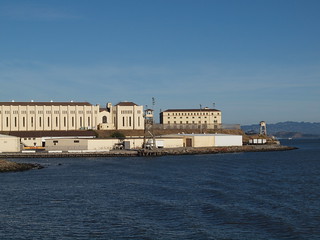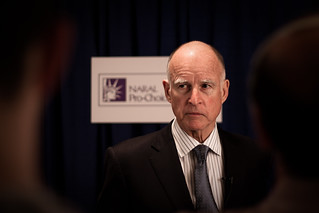 Panel say the delays are costing the taxpayers
Panel say the delays are costing the taxpayers
by Brian Leubitz
At some point, whether this year or two years from now, the state will have to get the prison population down to 137.5% of its designed capacity, or around 112,000 prisoners. Gov. Brown has been working on that primarily through realignment and shifting prisoners to private prisons out of state. The three judge panel took a look and decided the deadline should wait. But there’s a catch in the ruling (Full court order here):
Under Monday’s order, the state has until Feb. 28, 2016, to reduce the inmate population in its 34 adult prisons – designed to hold 81,574 inmates – to 137.5 percent of its current design capacity. State prisons now house roughly 117,600 inmates. The order requires the number to be reduced to 112,164 and bars the state from sending inmates to out-of-state prisons to get to that level. (SacBee)
Beyond that agreement not to send prisoners out of state, the state also agreed that they would seek to reduce the current out of state population of 8,900. Furthermore, the judges went ahead and outlined how the state was going to get down to that 137.5% figure pretty explicitly, with benchmarks and an appointed compliance officer.
Many of the media reports are simply referring this order as a stay of execution, but rather it is a compromise that requires the state to meet certain conditions. Beyond seeking additional space in county jails, the state will implement the following 8-point plan agreed to by the court:
(a) Increase credits prospectively for non-violent second-strike offenders and minimum custody inmates. Non-violent second-strikers will be eligible to earn good time credits at 33.3% and will be eligible to earn milestone credits for completing rehabilitative programs. Minimum custody inmates will be eligible to earn 2-for-1 good time credits to the extent such credits do not deplete participation in fire camps where inmates also earn 2-for-1 good time credits;
(b) Create and implement a new parole determination process through which non-violent second-strikers will be eligible for parole consideration by the Board of Parole Hearings once they have served 50% of their sentence;
(c) Parole certain inmates serving indeterminate sentences who have already been granted parole by the Board of Parole Hearings but have future parole dates;
(d) In consultation with the Receiver’s office, finalize and implement an expanded parole process for medically incapacitated inmates;
(e) Finalize and implement a new parole process whereby inmates who are 60 years of age or older and have served a minimum of twenty-five years of their sentence will be referred to the Board of Parole Hearings to determine suitability for parole;
(f) Activate new reentry hubs at a total of 13 designated prisons to be operational within one year from the date of this order;
(g) Pursue expansion of pilot reentry programs with additional counties and local communities; and
(h) Implement an expanded alternative custody program for female inmates. (Order at p. 3)
The Compliance Officer will be checking in with the court, but the court plans on retaining jurisdiction over the prison system until the reductions are deemed “durable.”
In the end, this is a very reasonable plan for all parties. It makes the prison system safer and healthier for prisoners and guards. It will shift focus from parole violaters and other low-risk offenders to the most dangerous elements in the prisons. There is a lot of evidence that we can make our communities safer through more rational sentencing, and perhaps this can be the hammer that prods us along that course.







